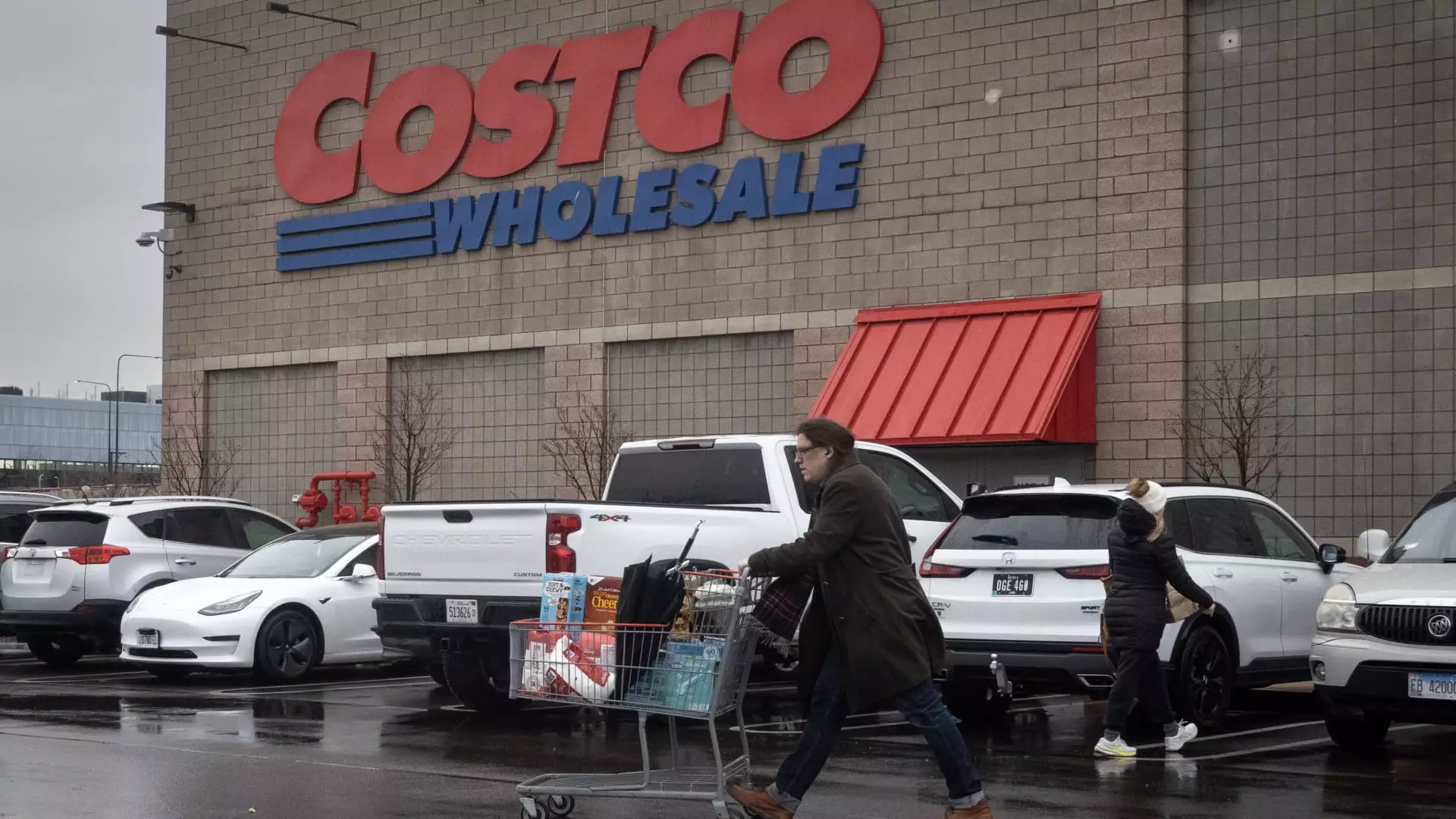Costco’s recent earnings report reveals a challenging landscape for the wholesale giant, marred by the complexities surrounding tariffs. While the company reported impressive revenue growth—$63.72 billion against an expected $63.13 billion—their earnings per share fell short of forecasts, coming in at $4.02 instead of the anticipated $4.11. This discrepancy sheds light on a broader economic struggle, as rising costs linked to international trade policies threaten to undercut profit margins. CEO Ron Vachris acknowledged the tough road ahead, emphasizing their strategy to cushion members from inevitable price increases due to tariffs, particularly on groceries, an essential category for consumers.
Vachris’s candid remarks underscore the delicate balance that Costco must navigate. With a significant portion of its sales stemming from imports, the company is vulnerable to the whims of trade dynamics. The 25% tariffs recently imposed on goods from Mexico and Canada, alongside heightened tariffs on Chinese imports, create a volatile environment for pricing stability. As those in the center-right political spectrum might argue, such trade regulations hinder free-market operations, potentially leading to a counterproductive cycle that penalizes everyday consumers while struggling producers seek recourse through inflationary measures.
Membership Growth: A Reliable Indicator of Resilience
Despite its earnings miss, Costco’s membership metrics shine as beacons of resilience. The second-quarter report showcased a commendable increase in membership fees, reaching $1.19 billion, further reflecting a robust base of 78.4 million paid memberships and an impressive renewal rate of 90.5%. These figures reveal a fundamental trust and value placed by customers in the Costco model, even amidst economic tremors.
Interestingly, this uptick in membership fees comes on the heels of an increase implemented in September 2024, which was the first rise in seven years. It speaks volumes that even in an era where consumers are more discerning due to inflation and potential tariff-induced price hikes, they are still willing to invest in their Costco memberships. This loyalty aligns perfectly with the center-right ideology that champions personal choice and individualism over heavy-handed governmental intervention.
The Evolving Consumer Landscape: Quality Over Quantity
One standout theme from Costco’s quarterly outcomes is consumer behavior—evolving trends that favor quality and value over sheer quantity. CFO Gary Millerchip pointed out that while consumers remain willing to spend, they are doing so with increased selectivity, a sensible pivot given the current economic realities. As inflation looms, everyday shoppers seem to recalibrate their expectations, valuing high-quality items at competitive prices more than ever before.
This shift in consumer sentiment serves as an essential reminder of the power dynamics in retail. Rather than simply doling out cash indiscriminately, customers are increasingly exercising their agency. They demand not only value but innovation, which indicates a market ripe for those retailers exhibiting adaptability. Brands that recognize and respond to these consumer preferences—like Costco—is likely to thrive, while those that remain stagnant face extinction in an aggressive marketplace.
Gains and Losses in Specific Categories
Costco’s report did not solely dwell on the challenges posed by tariffs; it also identified robust growth in key sales categories. The notable surge in sales across gold and jewelry, furniture, hardware, and toys reveals a diverse and engaged consumer base willing to spend across multiple sectors. However, while fresh foods saw modest growth, the continuing surge in meat consumption—particularly lower-cost options like ground beef—indicates a psychological adjustment among buyers.
Consumer behavior trends suggest that families are not just tightening their belts but are also seeking more sustainable and economical choices. Fluctuating prices put pressure on traditional purchasing patterns, and as consumers continue to pivot towards more affordable alternatives, retailers must stay swift and vigilant in meeting these demands. This dynamic aligns with a pro-market framework, affirming the notion that consumer choice and adaptability are keys to economic survival.
Looking Ahead: Navigating Through Challenges
As Costco pushes forward, it faces a myriad of challenges that could disrupt its progress. Factors such as extreme weather and fluctuating consumer behaviors reflect the unpredictability in the retail market. Overall inflation remains a minor concern, yet the underlying pressures of tariff implications might be just around the corner. In these tumultuous times, the steadfastness of Costco’s strategy—in particular, its focus on leveraging global buying power and solid supplier relationships—looks to be vital for navigating these uncharted waters.
In an era where governmental actions and international tensions influence everyday purchasing decisions, companies like Costco must remain agile. The need for innovation and a keen understanding of consumer sentiment is paramount as we advance in a world that continues to challenge standard operating procedures in retail. The question remains: will Costco manage to maneuver through these ongoing economic shifts? Only time will tell, but their current trajectory certainly suggests a cautiously optimistic outlook.

